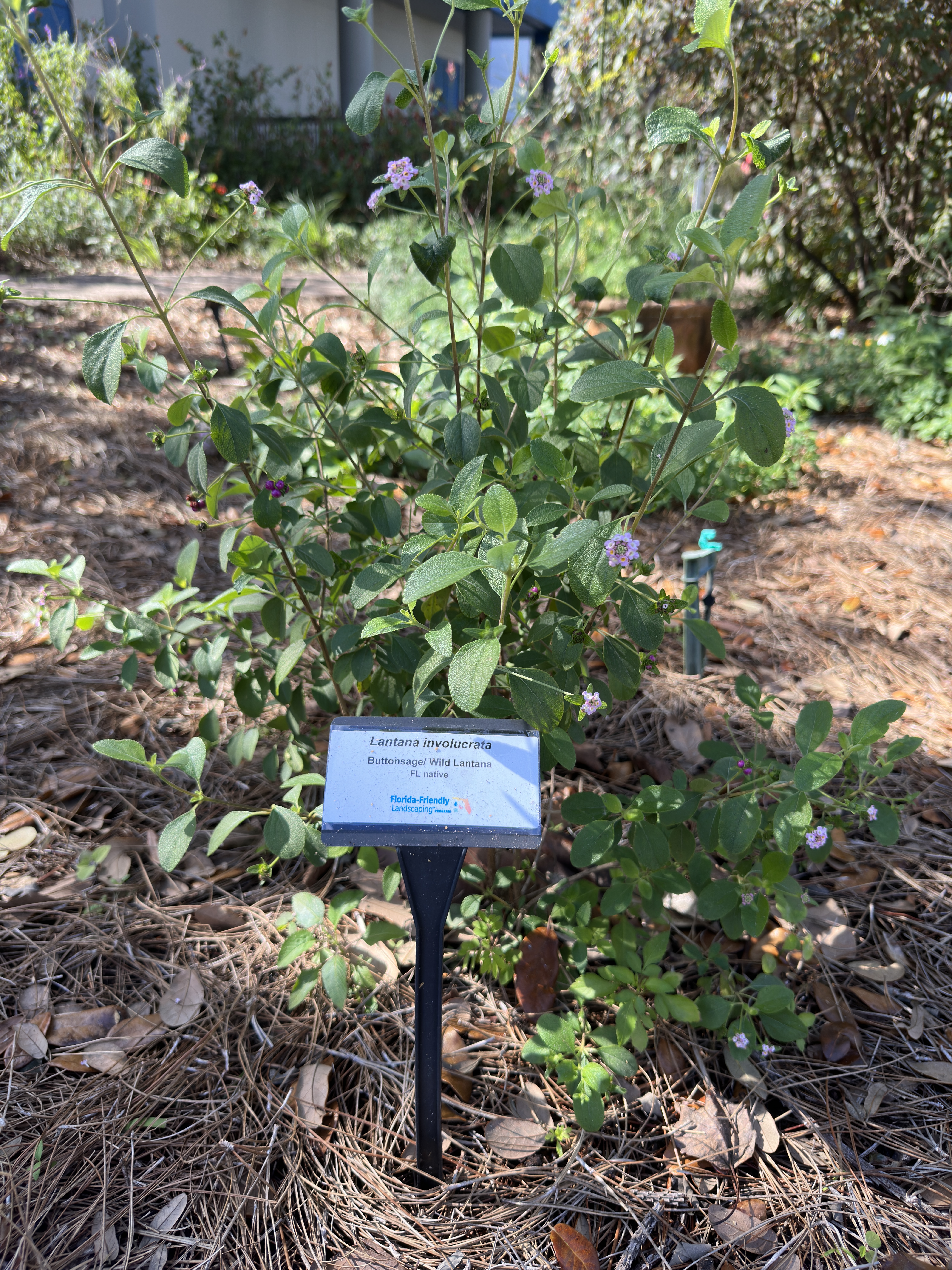Smart Landscaping Choices Can Help Save Water While Still Keeping Your Lawn Lush
by RYAN MILEJCZAK
photos by JESSICA MCDONALD
Water is one of the most precious resources we have. But with ever increasing growth and development here in Florida, our natural water resources are more strained than ever. Due to this, organizations throughout the state are working to find new sources of water and conserve existing water resources.
One Floridian working to protect Florida’s water resources is Julie Schelb, the Florida Friendly Landscaping Coordinator at UF/IFAS Extension Polk County. She works with the Florida Friendly Landscaping (FFL) program in the county to educate residents and green industry professionals on how to keep landscapes beautiful, maintained, and environmentally friendly.


According to Schelb, one of the biggest issues our state faces is that we’re rapidly running out of so-called “cheap water,” meaning water that is easily accessible and usable with minimal treatment.
“With the demand due to people and development, we’ve used up much of our cheap water resources,” explains Schelb. “Now Polk County is looking for alternative water sources, and there’s a cost associated with that. So we’re not running out of water, but we’re running out of cheap water.”
Seeking New Sources
Two major programs are currently underway in Polk County to find new sources of water for the county. The first involves drilling into the lower Florida aquifer.
“Because we’re running out of cheap water, we’re having to look at drilling into the lower Floridan aquifer. We have the upper Florida aquifer, which requires minimal treatment. There’s not a lot to it. When we go down to the lower Florida aquifer, however, that water has more salts and other nutrients in it that need to be removed,” Schelb says.
The second program involves treating wastewater and treating it to be safe for human use and consumption.
“The county also has a pilot where they’re looking at direct potable reuse. This involves taking wastewater and treating it to the point that it can actually be used. It’s not currently being redistributed for drinking water, but it will be treated so well that it can be used as clean drinking water,” she says.
Conserving Current Resources
While this work to access new water resources is important, just as important is protecting and conserving our existing water resources. Doing just this is the focus of the FFL program, which works to reduce the water usage and environmental impact of our landscaping.
“FFL was started in the mid ‘90s, and was developed by UF and the Florida Department of Environmental Protection,” Schelb explains.
“It’s a way to maintain landscapes here in Florida with our very unique climate. These landscapes use less water, less fertilizer, and less pesticide, using only what’s necessary, and through that we’re protecting our natural resources, particularly our water resources.”
FFL is made up of nine core practices:
- Right Plant, Right Place: This is the foundation of FFL, and involves using a native or non-invasive plant that is right for the local conditions, such as light, space, soil conditions, and more. For example, the folks at the FFL program showed Central Florida Ag News a small, non-irrigated garden that required drought tolerant plants. For this area, they selected native plants like muhly grass (Muhlenbergia capillaris) and coral honeysuckle (Lonicera sempervirens), which are ideal for the site.
- Water Efficiently: Using an efficient irrigation system, such as low volume micro irrigation, will conserve water and ensure that fertilizer and other pollutants don’t flow into bodies of water.
- Fertilize Appropriately: Know when to fertilize to prevent polluting bodies of water. For example, you shouldn’t fertilize right before a heavy rain storm.
- Mulch: Using mulch helps retain soil moisture, protect plants, and reduce weed growth. Use Florida friendly mulch, such as pine bark and melaleuca mulch, and avoid materials like rock and crushed shells.
- Attract Wildlife: Create a landscape that attracts and protects wildlife through practices such as planting fruit trees and flowering plants to attract birds and pollinators.
- Manage Yard Pests Responsibly: Instead of using pesticides indiscriminately, be responsible by using pest resistant plants, knowing the difference between beneficial and pest insects, and treating with the least toxic methods first, such as removing affected parts of the plant.
- Recycle Yard Waste: Rather than removing fallen leaves and grass clippings, leave them where they are. In addition to functioning as a natural mulch, they also conserve the nutrients in the soil. If you have to remove them, consider composting them.
- Reduce Stormwater Runoff: When stormwater runs off impermeable surfaces like pavement, it can pick up nasty pollutants. By following practices such as creating permeable surfaces (think rock pathways) and constructing rain gardens, you can keep water clean while providing water for your plants at the same time.
- Protect the Waterfront: Our bodies of water need to be protected from pollution and excess nutrients that can lead to things like algae blooms. To do so, there should be a 10 foot maintenance free zone around bodies of water where no mowing is done and no pesticides or fertilizers are used.
By following these practices, you can help do your part to conserve and protect Florida’s natural water resources. And with water being so precious and essential for all of us, it’s well worth the effort.
“I think it’s important for people to be aware of these issues,” says Schelb.
“While we’re not running out of water, water is definitely a precious resource, and cheap water in particular. Thinking of alternative ways to make all of this work is really important, and I think Florida friendly landscaping in particular is a great way to incorporate a nice landscape that is enjoyable, but also has a purpose and saves our water resources as well.”
Florida-Friendly Alternatives

















